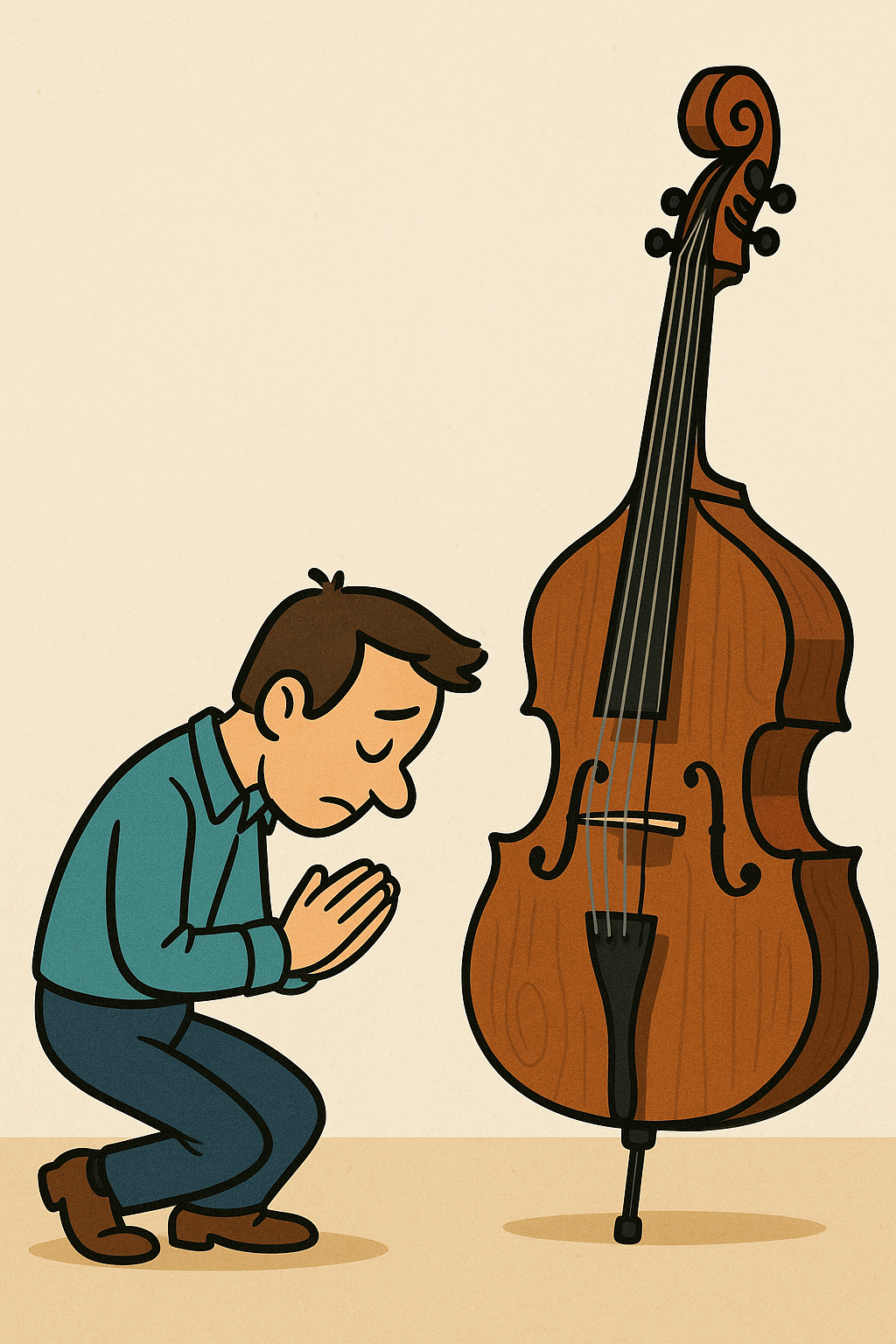The upright bass isn’t just an instrument; it’s the backbone of many musical styles, from classical to jazz, rockabilly, and more. Tracing its roots back to the 15th century, this big guy evolved alongside the double bass, carving its niche in both orchestras and solo performances. Its rich, resonant sound has captured the hearts of musicians and listeners alike.
In any band or ensemble, the upright bass plays a crucial role, anchoring the harmony and rhythm. That deep, mellow sound supports the melodies and often serves as the connecting string between different instruments. Whether holding down a reggae groove or busting out a bluegrass jam, the upright bass is your go-to for rhythm with style.
Now, when it comes to choosing the right upright bass, there are a few things to consider. Acoustic or electric? Both have their charm. Acoustic basses are full-bodied and traditional, making them ideal for unplugged settings. Electric versions, however, offer portability, making them perfect for gigs where amplification or effects are needed.
You’ll also bump into variations in the woods used for crafting these magnificent instruments. Spruce, maple, and ebony are popular choices for their durability and tonal qualities, offering rich, diverse sounds that suit different genres. So, figuring out what fits your musical vibe and physical comfort is the way to go.
Getting Ready to Play: Essential Gear and Setup
Jumping into the world of upright bass playing means getting your gear sorted out. First up, think about the essentials like the bass itself. Picking the right size is more about comfort than style, so try a few to see which fits comfortably with your height. Trust me, your back will thank you later!
You’ll need some accessories to keep your sessions smooth. A sturdy bow is a must, and your choice might come down to either a German or French style. Both have their fans, so give each a try to see which feels like an extension of your arm.

Don’t overlook items like a good quality rosin for your bow and a durable case for your bass. These seemingly small details make a big difference in your playing experience and your instrument’s longevity.
(I think the guy to the left misunderstood me. I meant a bow for your bass. Not bowing to the bass).
Getting the right posture is key to avoid turning a passion into a pain. Stand or sit up straight, ensuring the bass rests comfortably against you. Hold the neck with a relaxed grip and keep your elbows out, allowing for fluid movement. Mastering this from the start saves a lot of headaches—or backaches—later!
If you’re thinking of electrifying your sound, an amplifier tailored for bass can push your performance to new levels. Go for an amp that brings out the rich lows without fuzz, adding clarity to your notes without taking away their warmth.
The First Steps: Learning Basic Techniques and Exercises
Kicking off your upright bass journey involves mastering the basics that set a firm foundation for future skills. Start with finger positions because having the right stance on the fingerboard allows the true character of the notes to shine. Every position shifts the sound, turning simple notes into expressive music.
Bowing is where things get interesting. A few basic techniques can transform your playing from stiff to smooth. It’s all about finding that sweet spot on the string with the right pressure and speed. Practice the slow, deliberate strokes to get that lovely resonant sound that’s the hallmark of a good bass session.
Simple scales, ah, the bread and butter of bass practice! These exercises are your go-to for improving dexterity and building muscle memory. Start with major and minor scales, and with each step, you’re adding new dimensions to your sound and prepping those fingers to fly.
And let’s not forget your ear’s role in all this. Developing a keen ear for pitch and tone turns guesswork into precision. Listen closely as you play, adjusting to hit those sweet spots every time. This ear training is what helps bring your personal touch to every jam.
Joining the Groove: Engaging with Learning Communities and Resources
Stepping into the upright bass world opens doors to a vibrant community teeming with passion and knowledge. Being part of a group or ensemble not only enriches your playing but also keeps you inspired. It’s where you learn the magic of teamwork and sync up your groove with others.
Online resources can be a game changer for self-taught musicians. There’s a plethora of tutorials, videos, and forums where experienced players dish out tips and tricks. These resources serve as a convenient classroom, available anytime you’re ready to rock it.
Finding a mentor isn’t just beneficial; it’s transformative. A tutor can provide personalized feedback and guide you through the nuances of playing that might be missed online. They’re also great cheerleaders, keeping you motivated and committed.
Don’t forget to explore various music styles that highlight the upright bass. From jazz to folk, each genre offers different challenges and rewards, expanding your musical horizons and keeping your learning journey fresh and exciting.





